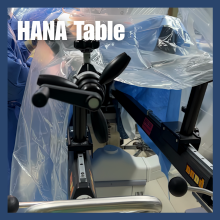When Can I Drive After Joint Replacement?
[Full Video Transcript, Cory Calendine, MD]
How soon after surgery can I drive? Everybody asks me, and it's an important question. You know, I used to say it was six to eight weeks after a hip and knee replacement before you could drive. But now, I take a more functional approach. The return to driving has to be individualized for each patient after hip or knee replacement.
All the patients start out on a walker for balance. My rule is you can drive a car when you're walking steady with a cane, as long as you're not on narcotic medication. I make sure everybody waits at least four hours after taking narcotic pain medicine before they drive safety first.
People also ask, "If it's my left leg, can I drive right away?". We've actually studied that subject, and even though we drive with our right leg most frequently, surgery on the left or opposite leg can slow down your reaction time. So there is a delay after surgery before most patients are able to drive - no matter which leg is operated on.



.png)




